Most martial use of lever-action rifles occurred around the American Civil War. The rifles were controversial in that era, but were beloved by troops, but seemingly disliked by Generals. Admittedly, lever-action rifles had a lot less range than your standard infantry rifle, but offered a much faster rate of fire.
Lever-Action Rifles of WWI
Beyond the American Civil War, the lever-action served with the French in the Franco-Prussian War of 1870 and the Ottomans in the Russo-Turkish War of 1877.
You’d be right to assume that most martial use of lever actions stopped at the turn of the century when cartridge firearms and bolt actions became the norm. You’re mostly right, but judging by the title of this article, it’s clear they served well into the 20th century.
When the entire world goes to war, it’s not tough to assume there would be a shortage in arms, and lever actions were readily available as a stop-gap to fill roles and free up battle rifles. Let’s take a trip to the trenches to see how and which lever-actions served in WWI.
Winchester 1886
By 1914, the Winchester 1886 seemed ancient. We discovered and weaponized flight between 1886 and 1914! With that in mind, the 1886 was picked for a very specific role. The British purchased 50 of these rifles chambered in .45-90 Sharps and were fielded with incendiary ammunition.
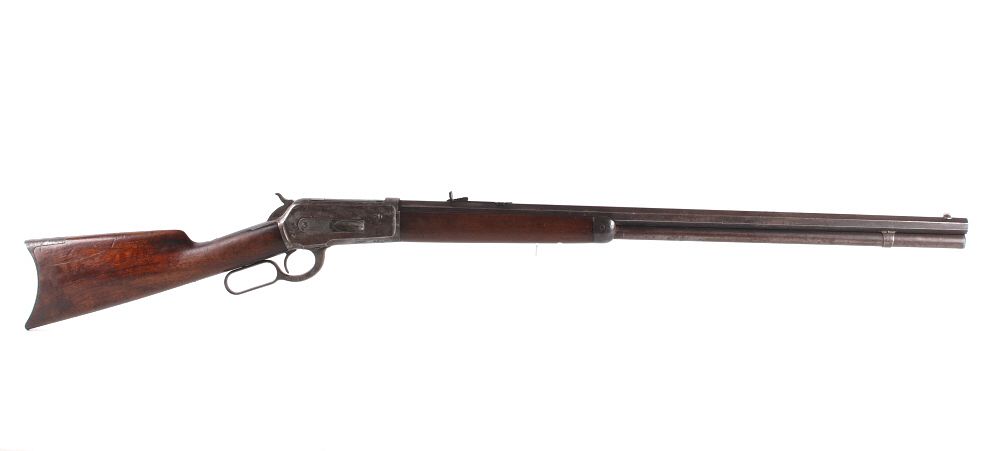
The Brits fielded these rifles to shoot down German airships. The incendiary ammo would ignite the hydrogen gas and send the German airships to the ground in a fiery fashion. It was a fairly cheap and effective idea that wasn’t resource-intensive. These rifles were a stopgap until better anti-airship weapons could be developed.
Winchester 1892
Alongside those limited numbers of Winchester Model 1886s, the British government purchased 20,000 Winchester 1892 rifles in .44-40. These rifles were purchased for the Royal Navy to free up Lee-Enfield rifles for infantry forces. Predictably, the rifles were used to guard ships and to clear mines. The .44-40 should certainly be enough to detonate a mine, right?
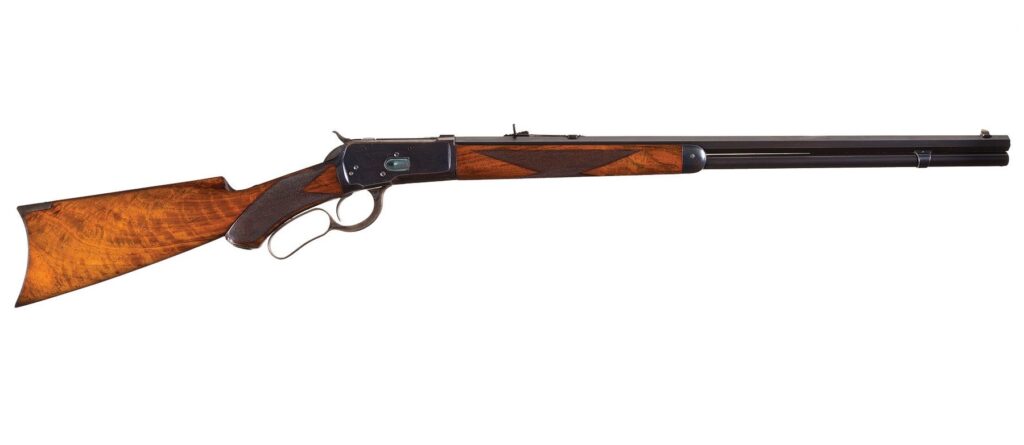
Winchester 1894
Of all the lever-action rifles on this list, the Winchester 1894 was the most widely used during warfare. The British purchased 5,000 of these rifles in .30-30 to serve alongside the Win 1892s for Royal Navy use. They guarded ships and detonated mines alongside the 1892s.
The French purchased 15,100 Winchester 1894 rifles for military use. The lever-action rifles required the No.44A rear sight and sling swivels on the left side of the buttstock and barrel band so troops could carry them across their backs. These rifles were issued to motorcycle couriers, artillery troops, truck drivers, and balloon units.
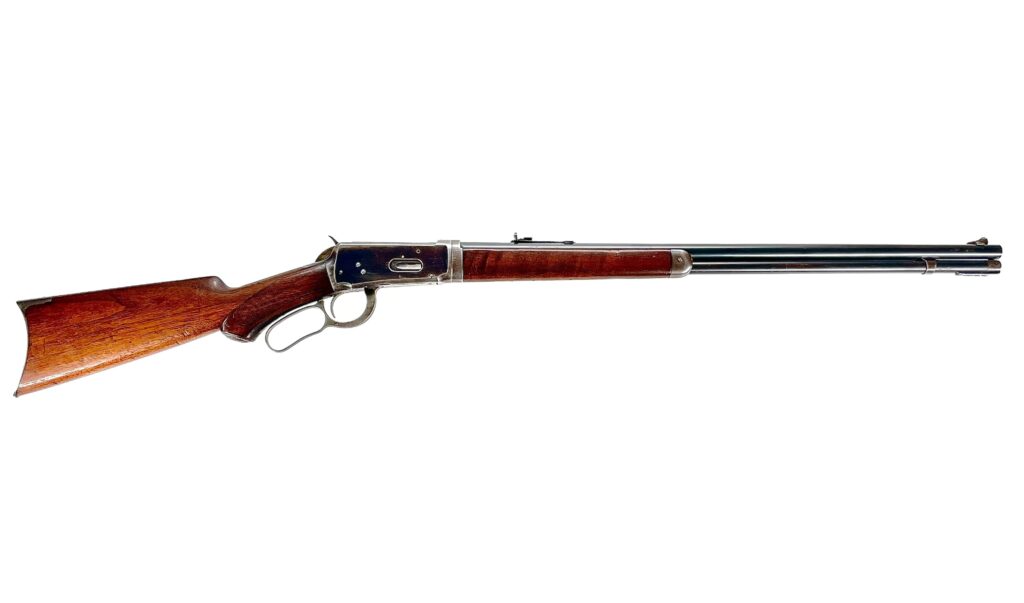
The United States purchased 5,000 Winchester 1894s and 50,000 .30-30 rounds. These never left the United States and were issued to the United States Army Signal Corps to help protect the timber used to produce aircraft of the era.
Winchester 1895
The Russians were responsible for the largest military sale of lever-action rifles in the modern era. The Russians purchased 300,000 models of the 1895 for their military forces. The 1895 rifles were a bit different than your standard lever gun. They were designed to use standard Spitzer-style cartridges and used internal magazines instead of tubular magazines.
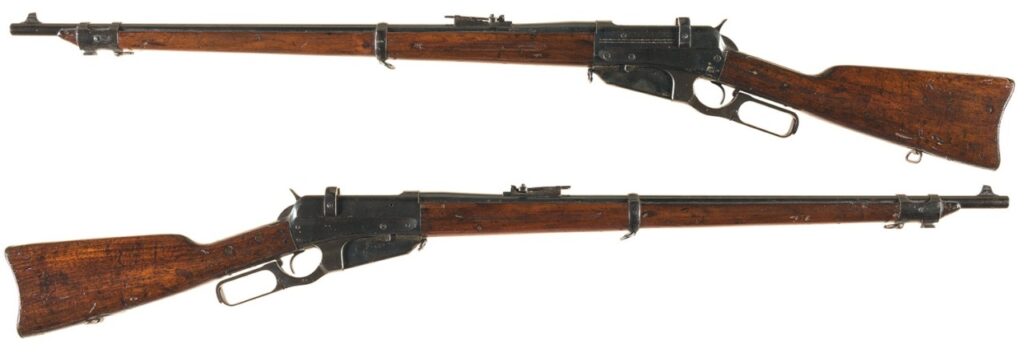
The Russian variants chambered the 7.62x54R cartridge, and the contract rifles were designed to accept Mosin-Nagant stripper clips and used Russian arshins for the rear sight. These rifles had long handguards and bayonet lugs to be modern military rifles. The rifle was extensively used during World War I, more so than any other lever-action rifle.
Savage Model 99
This article would have been called “The Winchesters of World War I” if it weren’t for the Savage Model 99. Like the Winchester Model 1895, the Model 99 was designed to use spitzer-style rounds. The Savage Model 99 used a rotary-type magazine, and they varied between internal and detachable depending on when the gun was produced.
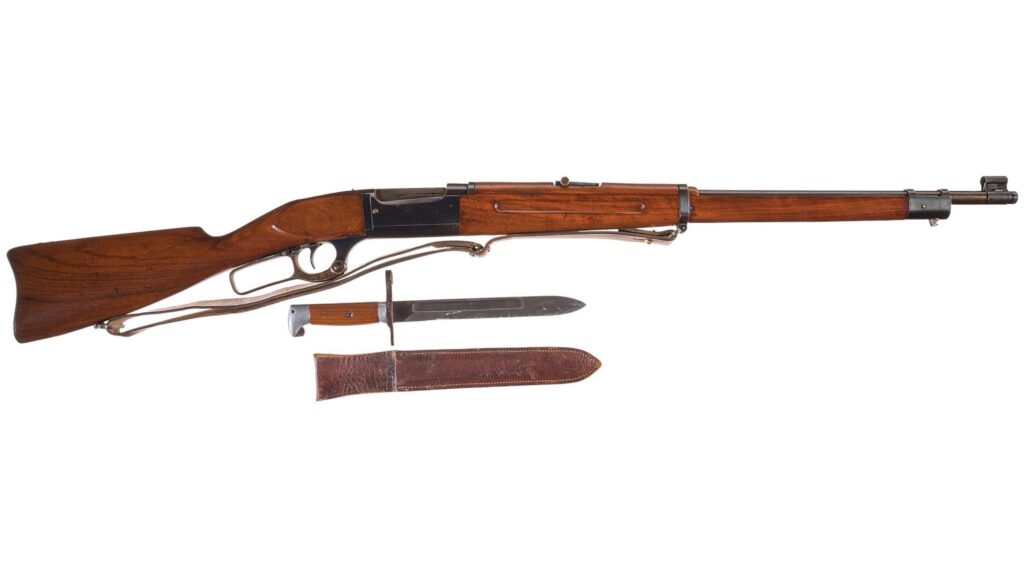
To free up rifles for the war effort, the Montreal Home Guard adopted the Savage Model 99. This particular model was referred to as a musket. It was rifled, but “musket” was just the terminology used to describe the weapon due to its full military-style stock and handguard, along with a bayonet lug. They ordered 2,500, but seemingly only took delivery of 803. These were chambered in .303 Savage.
The Lever Actions Of World War I
World War I introduced the widespread use of tanks, machine guns, chemical weapons, bombers, and more. It’s an interesting contrast to see so many lever guns serving in industrialized warfare. While most were never on the front lines, it’s fascinating to know they were fielded.
Read the full article here













